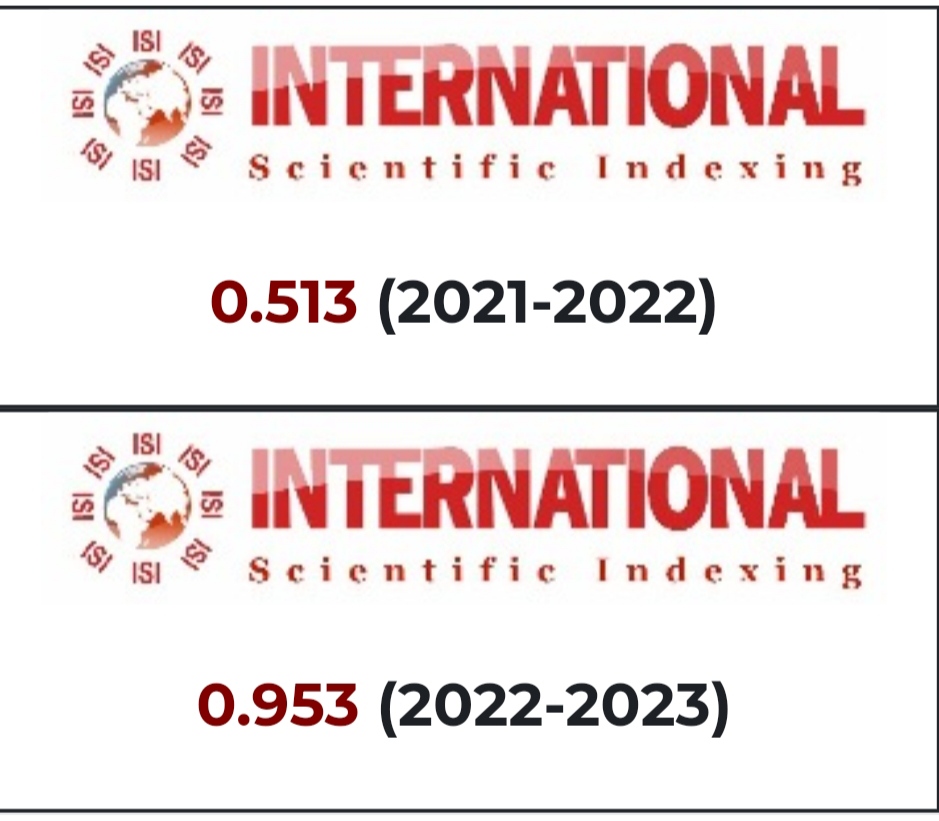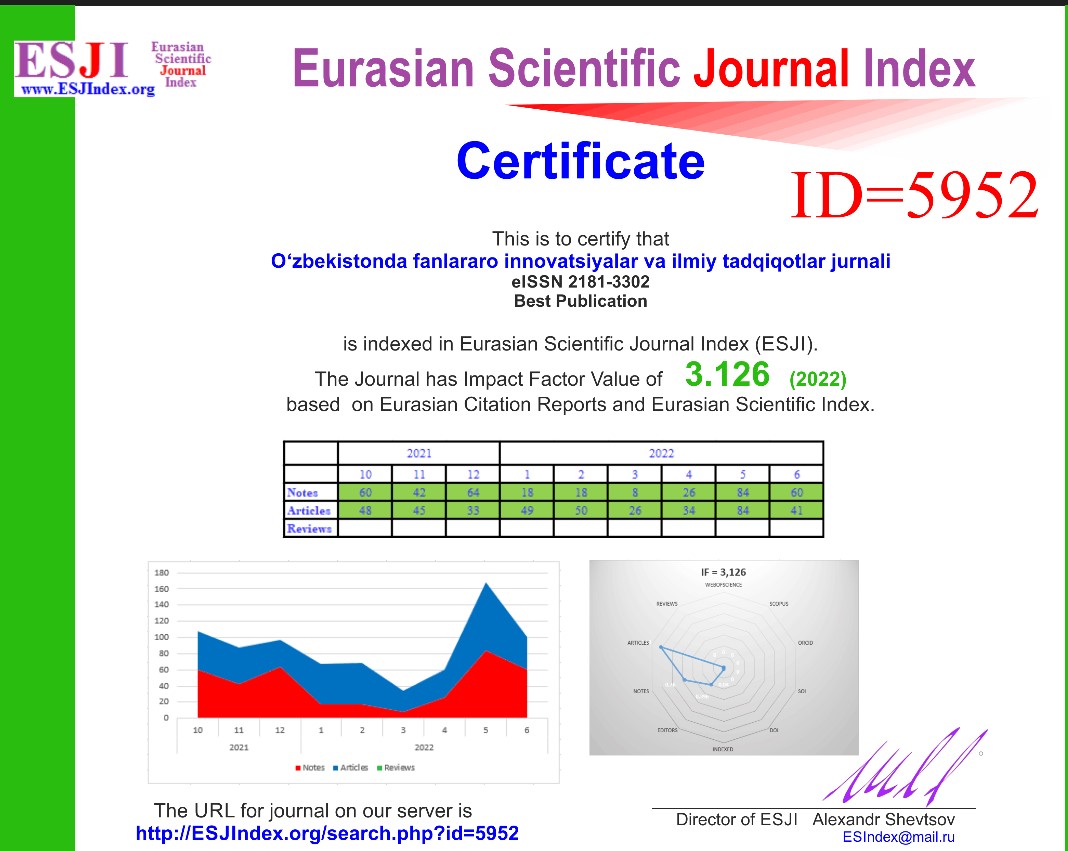INVESTIGATION OF SEPARATION OF USABLE FIBERS ADDED TO CONTAMINANTS DURING CLEANING COTTON
Keywords:
Linter, controlled-batt saw, saws, quality, cleaner, ginning, rollers, feed-roller, grid bar, condenser screen drum, brush, batt, doffing brush cylinder, feed plate, vane-axial fanAbstract
Lint cleaners were developed specifically for removing leaf particles, motes, grass, and bark that remain in cotton after seed cotton cleaning, extracting, and ginning. They were developed and improved in conjunction with the transition from manual to mechanized harvesting of cotton during the 1980's. Virtually all gins in the Agriculture of Uzbekistan have lint-cleaning facilities, and over four-fifths of the gins have two or more stages of lint leaning The lint cleaners now being marketed are of two general types, flow-through air type and controlled- batt saw type.
References
G.J.Jabbarov,T.U.Otametov,A.Xamidov“Technology of initial processing of seed cotton” Toshkent O’qtuvchi-1987
Muhsinov Ibroxim, Isayev Shaxboz,Yuldashev Xasanboy“Theoretical Analysis Of The Motion Of Raw Cotton With Uniform Feeder In A Cotton Cleaner” The American Journal of Engineering and Technology (ISSN – 2689-0984) (2021)
Yuldashev Xasanboy, Dusmatov Azamjon “Theoretical Analysis of storing, cleaning, processing of seed cotton” Scientific Journal Impact Factor
W.S. Anthony and William D. Mayfield, Managing Editors” Cotton Ginners Handbook”
A. Jurayev, X.T. Axmexodjayev, A Bomatov,” Improvement of designs and development of methods for calculating the working organs of cleaning cotton from fine litter” Namangan-2016
X.T. Axmedxojayev, M.A.Tojiboyev, X.N.Sharipov “Improving the fiber separation process” “Istedod ziyo press” Namangan-2021
O.Sh.Sarimsakov “Theoretical bases of cotton transfer and pneumatic transport processes” Toshkent-2021
Anthony, W.S. 1974. Noise levels of cotton ginning systems. Transactions of the ASAE 21:574-580, 584.
Anthony, W.S. 1977. Reduction of lint cleaner brush noise., Technical Proceedings of National Noise and Vibration Conference, Chicago, IL, March 14-17, pp.181-189.
Anthony, W.S. 1979. Reduction of vane-axial fan noise in cotton gins. Cotton Gin and
Oil Mill Press 80:16-20.
Anthony, W.S. 1981a. Acoustical transmission losses in pneumatic systems in cotton
gins. Transactions of the ASAE 24:469-475.
Anthony, W.S. 1981b. Noise control with viscoelastic materials. Transactions of the
ASAE 24:503-508.
Anthony, W.S. 1983. Economical control of cotton conveyance noise with viscoelastic
materials. Cotton Gin and Oil Mill Press 84:6-7, 10.
Anthony, W.S., and O.L. McCaskill. 1978. Low-noise versus standard brush cylinders
for gin machinery. Transactions of the ASAE 21:1045-1050.
Cooper, W.A. 1974. The ear, hearing, loudness, and hearing damage. In M.J. Crocker,
ed.. Reduction of Machinery Noise, pp. 43-50. Purdue University, West Lafeyette, IN.
Harris, Cyril M. 1979. Handbook of noise control. 2d ed. 720 pp. McGraw-Hill, New
York, NY.
Laird, Weldon, and Joe D. Anderson. 1977. Better doffing: Less noise. Cotton Ginners'
Journal and Yearbook 45:30-37.
Laird, Weldon, and R.V. Baker. 1982. Confirmation of cotton gin noise by multivariate analysis techniques. Transactions of the ASAE 25:1050-1056.
Jules Dagenais “ History, Properties and Use” 2000 1-145
Word-Cotton Lint-Market Analysis,Forecast, Size, Trends and Insights 2020











